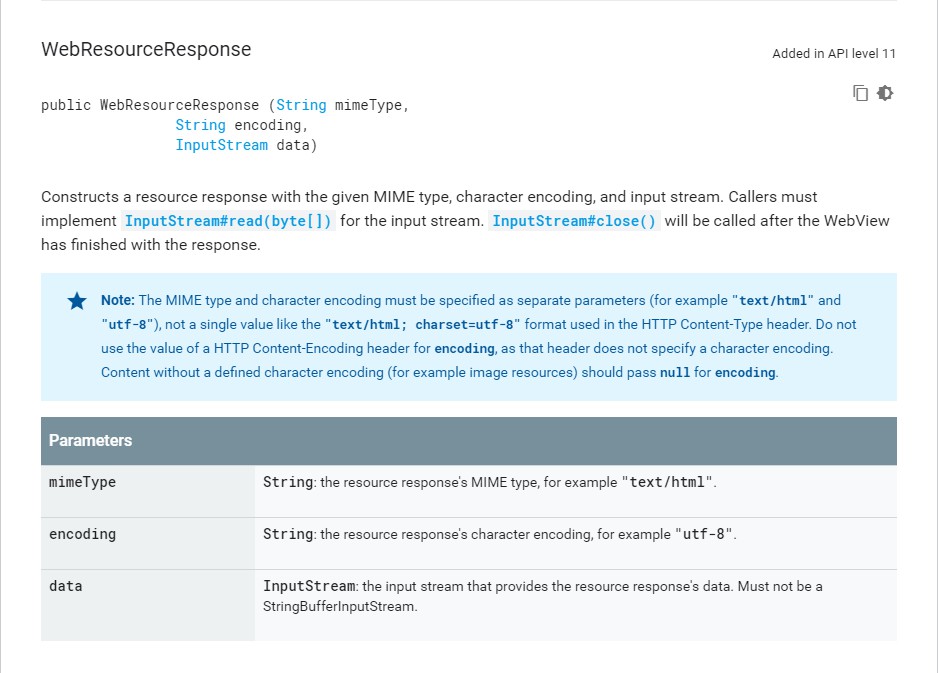起因:
有些时候自家APP中嵌入的H5页面并不是自家的。但是很多时候又想在H5不知情的情况下获取H5内部请求的参数,这应该怎么做到呢?
带着这个疑问,就有了这篇博客。
实现过程:
方案一:
最开始想到的方案是直接拦截H5中所有的请求:
1 webView.setWebViewClient(new WebViewClient() { 2 @Override 3 public WebResourceResponse shouldInterceptRequest(WebView view, WebResourceRequest request) { 4 try { 5 URL url = new URL(request.getUrl()); 6 } catch (MalformedURLException e) { 7 e.printStackTrace(); 8 } 9 Log.e("InternetActivity", request + ""); 10 return super.shouldInterceptRequest(view, request); 11 } 12 13 });
但是通过此方法只能获取get请求的参数(因为参数直接拼在了url链接中),对于post请求的参数无可奈何。
方案二:
后来参考了request_data_webviewclient,有了新的实现方式,具体原理为:给H5注入一段js代码,目的是在每次Ajax请求都会调用Android原生的方法,将请求参数传给客户端。
具体流程如下:

其中,
js注入代码:
1 <script language="JavaScript"> 2 3 function generateRandom() { 4 return Math.floor((1 + Math.random()) * 0x10000) 5 .toString(16) 6 .substring(1); 7 } 8 9 10 // This only works if `open` and `send` are called in a synchronous way 11 // That is, after calling `open`, there must be no other call to `open` or 12 // `send` from another place of the code until the matching `send` is called. 13 requestID = null; 14 XMLHttpRequest.prototype.reallyOpen = XMLHttpRequest.prototype.open; 15 XMLHttpRequest.prototype.open = function(method, url, async, user, password) { 16 requestID = generateRandom() 17 var signed_url = url + "AJAXINTERCEPT" + requestID; 18 this.reallyOpen(method, signed_url , async, user, password); 19 }; 20 XMLHttpRequest.prototype.reallySend = XMLHttpRequest.prototype.send; 21 XMLHttpRequest.prototype.send = function(body) { 22 interception.customAjax(requestID, body); 23 this.reallySend(body); 24 }; 25 26 </script>
客户端拦截请求:
1 @Override 2 public final WebResourceResponse shouldInterceptRequest(final WebView view, WebResourceRequest request) { 3 String requestBody = null; 4 Uri uri = request.getUrl(); 5 6 // 判断是否为Ajax请求(只要链接中包含AJAXINTERCEPT即是) 7 if (isAjaxRequest(request)) { 8 // 获取post请求参数 9 requestBody = getRequestBody(request); 10 // 获取原链接 11 uri = getOriginalRequestUri(request, MARKER); 12 } 13 14 // 重新构造请求,并获取response 15 WebResourceResponse webResourceResponse = shouldInterceptRequest(view, new WriteHandlingWebResourceRequest(request, requestBody, uri)); 16 if (webResourceResponse == null) { 17 return webResourceResponse; 18 } else { 19 return injectIntercept(webResourceResponse, view.getContext()); 20 } 21 }
客户端注入js代码:
1 private WebResourceResponse injectIntercept(WebResourceResponse response, Context context) { 2 String encoding = response.getEncoding(); 3 String mime = response.getMimeType(); 4 5 // WebResourceResponse的mime必须为"text/html",不能是"text/html; charset=utf-8" 6 if (mime.contains("text/html")) { 7 mime = "text/html"; 8 } 9 10 InputStream responseData = response.getData(); 11 InputStream injectedResponseData = injectInterceptToStream( 12 context, 13 responseData, 14 mime, 15 encoding 16 ); 17 return new WebResourceResponse(mime, encoding, injectedResponseData); 18 }
注:根据谷歌官方文档,mime必须为"text/html"。

反思:
- 开发过程中遇到了页面一直显示不了的问题,实际上就是因为获取到的mime是"text/html; charset=utf-8",得改成"text/html";
- 通过此方法也可篡改response与request,但不要滥用;
- 所以说,Android确实不安全!
GitHub地址:webview_post_data
大家如果有什么疑问或者建议可以通过评论或者邮件的方式联系我,欢迎大家的评论~






















 4621
4621











 被折叠的 条评论
为什么被折叠?
被折叠的 条评论
为什么被折叠?








